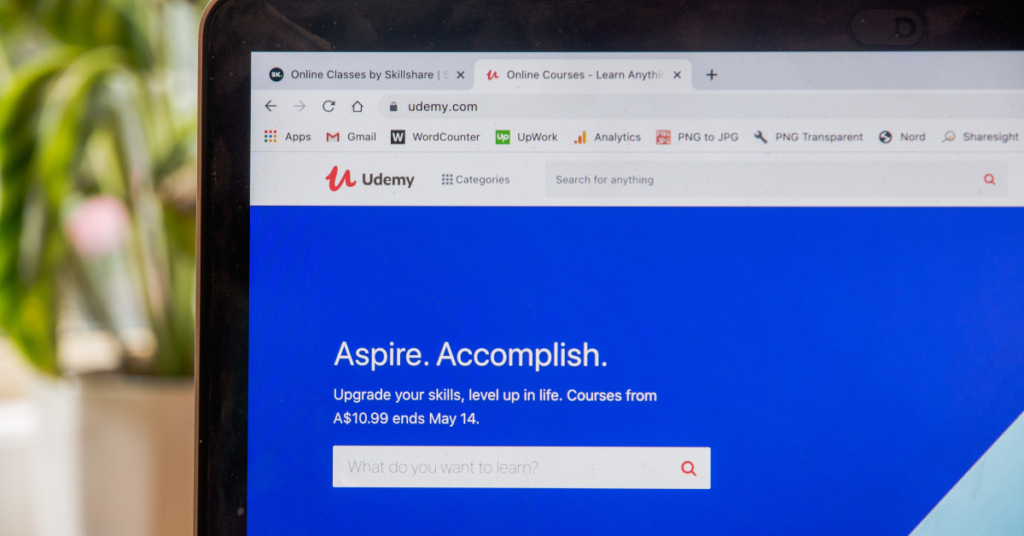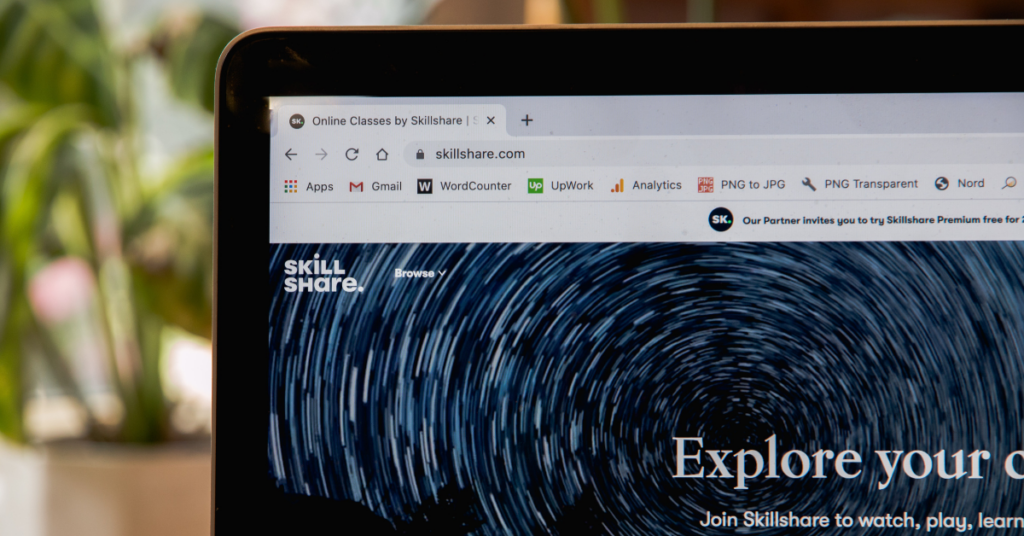The eLearning course market is expected to hit $337 billion by 2025. You can see why so many people want a piece of that pie with stats like that. But when you set out to create an eLearning course, how do you ensure you’re nailing the quality and reach you need for successful returns? This handy guide breaks down everything you need to know to build an eLearning course.
Step 1: Dig deep into your objectives
When building an eLearning course, you must drill down into the ‘why’ of what you’re delivering. Why are you setting it up? Why will people choose your course? Think about your target audience, what’s important to them and what they want to gain out of the course. If your course is designed to train employees, then you may want them to feel a certain way about your company. This might be excited, proud, or engaged. Therefore consider how your course will take steps to make them feel this way.
Step 2: Run a competitive analysis
Before setting out to build your course structure, one of the most important things you should do is run a competitive analysis. What’s their price point? What modules are they including? Make sure to check out YouTube, where instructors are giving content for free. What are viewers asking in the comments? What do they want to hear more about? All this data is invaluable for ensuring that you structure the course correctly and stand out from your competitors.
What to look for when analysing competitors
- What price is their course
- How long is their eLearning course
- How many modules are on the course
- What content are they covering
- What quality is the footage, i.e. a video production company or home shot footage
- Do they offer promo codes
- How are they marketing their eLearning course
- What is the experience of the instructor
- How are they building trust signals
- Do they have a funnel set up
Step 3: Create the course structure
The next step is figuring out how the course will be structured. This is an essential part, as this is what will keep your audience engaged, spread the word about your course, and leave great reviews. Assess how the modules will be structured and what will be covered in each module. Sense check it against your competitor analysis to see whether you’re creating a better flow and content structure than they are.
Step 4: Engage with the right suppliers.
Whilst it might be tempting to shoot the course yourself with a home video camera to keep costs down, it’s always worth instructing a video production company for a more professional look and feel. An experienced video production company will likely have top quality camera kit and the right lighting, plus they’re experts in helping you get the right flow. When it comes to editing the content, a video production company can also help save you hundreds of hours in editing time.
Step 5: Create your script
Whilst you might prefer to go unscripted, it can be a good idea to have a rough form of script to make sure you cover all the critical points along the way. When writing the script, consider where you may be talking to the camera versus animations, visuals or interactive elements.
Step 6: Define your look and feel
Before filming, you want to decide the look and feel of your completed eLearning course. Will you go for a more relaxed background set-up, or is it more formal? What will be the branding of the slides? Are you allowing enough space for subtitles? Are you looking for a corporate, fun, or calming look and feel? Your look and feel will help set the tone for your eLearning course.
Step 7: Start filming.
Once you’ve finalised your eLearning course structure, it’s time to start filming. This is where a video production company can help guide you, ensuring you’re getting the best shots, the content is natural, and you’ve got the right flow.
Step 8: Editing time
Once you’ve shot all your footage, it’s time to edit the content. Here you can remove any inconsistencies and add animation, music, subtitles and interactive elements to engage with the audience.
Step 9: Marketing your eLearning course
You’ve spent hours of hard work creating your eLearning course, but now it’s time to let everyone know about it. It can be easy to assume that because you know every inch of your course back to front, everyone else will. But selling your eLearning course requires a solid marketing strategy to ensure you get the results you want to achieve. There’s a whole host of ways you can market your course, from Facebook ads, organic social media, and SEO blogs to free taster content. This blog from Penceo gives a wealth of ideas for ‘The Most Efficient Ways to Market your E-learning Courses’
How to price eLearning courses
When selling an eLearning course, it’s important to think about how you’ll price it. Elearning courses can range enormously in pricing, from free to the thousands. Here are our top tips for knowing how to price your eLearning course.
Tip 1: Size up your competition
Start off by sizing up your competition, understanding what they are offering and for what price. When assessing your competition, read their reviews. This can give key insights into whether those who have taken the course feel it’s overpriced or a bargain. Does the competition have fewer or more modules than yours, is their production more sophisticated, is the teacher more or less experienced, and how long are their courses compared to yours?
Tip 2: Determine your build, launch and ongoing marketing costs
Your eLearning is bound to have a cost associated with the build, whether that’s using a video production company for a polished finish, animators or a video kit. You don’t want to make a loss, so make sure to build these costs into your course price. Once you’ve launched, you also need to factor in ongoing marketing costs to ensure your course gets in front of the right target audience. This might be Facebook Ad costs through to email marketing software subscriptions.
Tip 3: Assess the quality of the content
When pricing your eLearning course, it’s essential to assess the quality and the perceived value. A course with twenty 30-minute modules will be perceived to have more value than a two-hour course. As will a course that has high-quality production involving professional editing, interactive elements and supporting worksheets etc.
Tip 4: Understand the value the course offers
Is your eLearning course a gateway to starting and scaling a brand, helping students to earn £££, or is it an eLearning course to help them learn marketing? Consider what the course gives the student. If it’s elements such as more financial freedom or increased visibility at work leading to job promotions etc. then they will be more willing to spend money on your eLearning course.
Best tools for creating an eLearning course
Canva – Become a graphic designer with this easy-to-use free tool. Canva gives you access to a wide range of templates, helping you to look professional at a fraction of the cost of a designer.
Unsplash, Pexels and Pixabay – Free photography to use in your eLearning course.
Grammarly – Make sure you don’t go to market with a spelling mistake in your course. Check everything using the Grammarly app.
Pixlr – A cheaper, online version of Photoshop, Pixlr helps you edit your imagery.
Google Forms & Survey Monkey – If you want to build in interactive elements in the course, Google Forms or Survey Monkey are a great way to gather responses.
How long should an eLearning course be?
The length of your eLearning course depends entirely on what you teach, your target audience and your planned price point. Some courses may better suit five sessions of 30-minute modules, whereas some could be 20 hours of 20-minute modules. When deciding the length of the course, make sure to assess the length of courses your competitors are offering. And remember that shorter isn’t always better. Depending on the topic, your audience might perceive a longer course to give them more value, whereas people might want shorter bite-sized content in some industries.
How much does it cost to build an eLearning course?
When setting up an eLearning course, the costs can vary significantly depending on the level of production. If you’re shooting with your own camera kit and using free video editing tools, then you can create a course for under £1,000. But if you want a more polished finish and a video production company, your costs will likely sit from around the £5k+ mark, depending on the provider.
Best platforms to host eLearning courses
You can use a whole host of platforms to host your eLearning course, from Udemy to Skillshare. When looking at the platform, consider which best suits your target audience and whether their pricing model works for you. For instance, with Udemy, instructors will receive 37% of the course price, whereas the platform Kajabi offers funnels, landing pages and email marketing for $159 a month.
To see our other recommended platforms check out our 5 Best Platforms for Hosting your ELearning Course Blog.
If you’re looking for support creating video content for your eLearning course, then here at Small Films, we’ve got a wealth of experience. As a video production company in London, we’ve shot films for the likes of EDF and Fiverr, so we know exactly what makes an engaging e-learning course that will stand out from your competitors.







